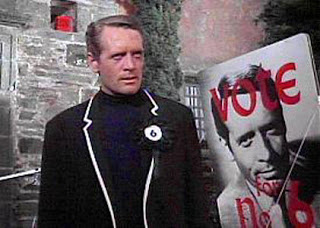On a psychotherapist who died at 86 on Monday —
"He studied mathematics and statistics at the Courant Institute,
a part of New York University — he would later write … a
mathematical fable, Numberland (1987)."
— The New York Times online this evening

|
This wry parable by a psychotherapist contains one basic message: though death is inevitable, each moment in life is to be cherished. In the orderly but sterile kingdom of Numberland, digits live together harmoniously under a rigid president called The Professor. Their stable society is held intact by the firm conviction that they are immortal: When has a number ever died? This placid universe is plunged into chaos when the inquisitive hero SIX crosses over into the human world and converses with a young mathematician. This supposedly impossible transition convinces the ruling hierarchy that if SIX can talk to a mortal, then the rest of the numbers are, after all, mortal. The digits conclude that any effort or achievement is pointless in the face of inevitable death, and the cipher society breaks down completely. The solution? Banish SIX to the farthest corners of kingdom. Weinberg (The Heart of Psychotherapy ) uses his fable to gently satirize the military, academics, politicians and, above all, psychiatrists. But his tale is basically inspirational; a triumphant SIX miraculously returns from exile and quells the turmoil by showing his fellow digits that knowledge of one's mortality should enrich all other experiences and that death ultimately provides a frame for the magnificent picture that is life.
Copyright 1987 Reed Business Information, Inc.
|
See also The Prisoner in this journal.










